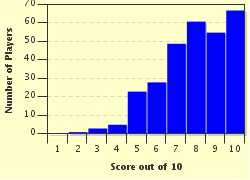Quiz Answer Key and Fun Facts
1. Who won an Oscar, a Golden Globe, and a BAFTA award as best actor for his performance as Gandhi?
2. Which scene in the movie "Gandhi" included an unprecedented 300,000 extras?
3. Early on in the film, what incident crystalized Gandhi's awareness of racial injustice, and spurred him to eventually take on the cause of India's liberation from British domination and rule?
4. What did Gandhi do when he returned to India from his adventures and epiphany in South Africa?
5. Which actors portrayed Margaret Bourke-White and Walker, two Western journalists who accompanied Gandhi on significant parts of his journey?
6. Gandhi was called by several different names in the movie. Which name is NOT used to refer to him?
7. Gandhi organized and coordinated a confrontation with the British rulers over the harvesting, use and control of a basic commodity, which led to the occupying government finally conceding and turning over home rule to the Indian nation. What was this commodity?
8. When the British finally saw the futility of trying to maintain control of India and pulled out, what burning political issue threw the situation into chaos?
9. How did Gandhi die?
10. The director of "Gandhi" also swept the Oscar, the BAFTA, the Golden Globe, and the New York Film Critics Circle best director awards for the film. Who was it?
Source: Author
Nealzineatser
This quiz was reviewed by FunTrivia editor
LadyCaitriona before going online.
Any errors found in FunTrivia content are routinely corrected through our feedback system.

